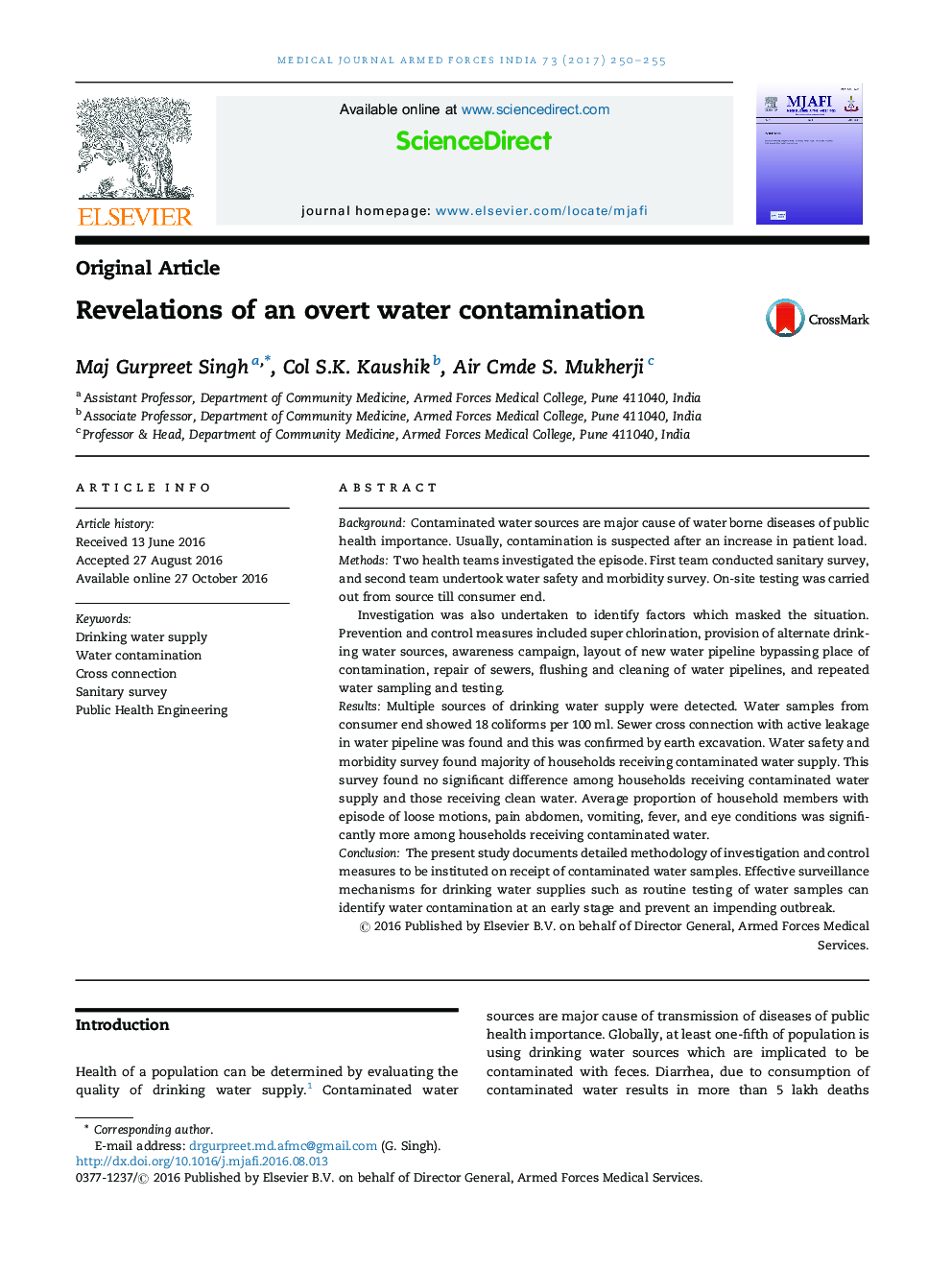| Article ID | Journal | Published Year | Pages | File Type |
|---|---|---|---|---|
| 5642161 | Medical Journal Armed Forces India | 2017 | 6 Pages |
BackgroundContaminated water sources are major cause of water borne diseases of public health importance. Usually, contamination is suspected after an increase in patient load.MethodsTwo health teams investigated the episode. First team conducted sanitary survey, and second team undertook water safety and morbidity survey. On-site testing was carried out from source till consumer end.Investigation was also undertaken to identify factors which masked the situation. Prevention and control measures included super chlorination, provision of alternate drinking water sources, awareness campaign, layout of new water pipeline bypassing place of contamination, repair of sewers, flushing and cleaning of water pipelines, and repeated water sampling and testing.ResultsMultiple sources of drinking water supply were detected. Water samples from consumer end showed 18 coliforms per 100Â ml. Sewer cross connection with active leakage in water pipeline was found and this was confirmed by earth excavation. Water safety and morbidity survey found majority of households receiving contaminated water supply. This survey found no significant difference among households receiving contaminated water supply and those receiving clean water. Average proportion of household members with episode of loose motions, pain abdomen, vomiting, fever, and eye conditions was significantly more among households receiving contaminated water.ConclusionThe present study documents detailed methodology of investigation and control measures to be instituted on receipt of contaminated water samples. Effective surveillance mechanisms for drinking water supplies such as routine testing of water samples can identify water contamination at an early stage and prevent an impending outbreak.
